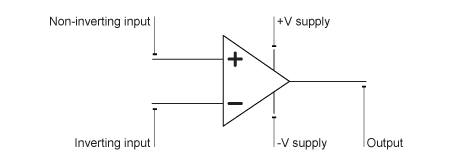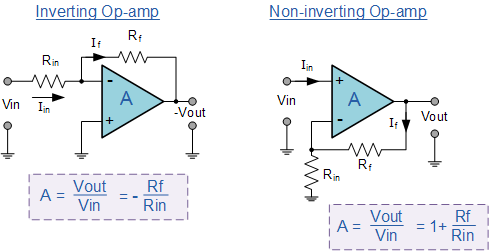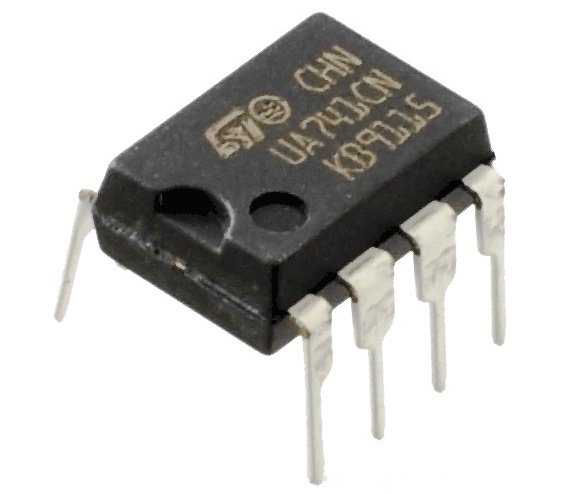& Construction

Integrated BIM tools, including Revit, AutoCAD, and Civil 3D
& Manufacturing

Professional CAD/CAM tools built on Inventor and AutoCAD
7 min read
We all live in a world surrounded by the wonders of amplifiers. If you’ve ever been to a concert and heard the loud electric squeal of a guitar blast through the stadium, that’s an amplifier at play. Or the speakers pouring music through your radio on a lazy Sunday afternoon, amplifiers again. In this world of amplification, the goal is simple – to boost the electric current and voltages up a notch. But are all amplifiers created the same, or used for the same purposes? Definitely not. We’re here to learn about the mysterious black box of the amplifier family, and how it plays a way bigger role than just with sounds. It’s the operational amplifier, and it’s here to amp you up!
Before diving into the intricacies of the op-amp, let’s first understand what amplifiers as a general category of components do for the world of electronics. Ever get your hands on a hearing aid? They’re a perfect example. Hearing aids use a microphone to pick up sounds from the external environment, which then gets turned into an electrical signal. Inside this hearing aid, there’s an amplifier that takes that signal, boosts it up to make it louder, and sends it to a speaker resting inside your ear canal. It’s not magic, just engineering!

This entire process of taking an input signal, amplifying it, and sending it onwards as an output signal is the essence of amplifier circuits. The boost that an amplifier produces for a given signal is measured in gains, or gain factor. This is simply the difference in voltage between an input signal and an output signal. For example, if you start with 1 volt at your input, and get 5 volts at your output, then you have yourself a gain of 5. For sound related amplification, this gain is measured in decibels (dB).
While all amplifiers might have the same general purpose, when you need an ideal amplifier then you want to use an op-amp. Within analog electronics, nothing comes close to matching the ideal performance of an amplifier as this device. The beautiful thing about an op-amp is that you can mix and match active parts like transistors with passive components like resistors, capacitors, etc. to get some useful amplification characteristics, like:
The great thing about op-amps is that they aren’t just used to amplify sound like a traditional amplifier. You’ll also see them being used for:
Regardless of its particular purpose, an op-amp always aims to deliver an output voltage raising or lowering input voltages until the are equal. But how does it make that happen? Let’s take a look at a typical op-amp schematic symbol to explain how it works. Here’s what you need to know:

There are two input signals, an inverting input marked with a negative (-) symbol, and a non-inverting input indicated with a positive (+) symbol. When you have a positive signal on your inverting input, then you’ll get an amplified output that is the inverse, or the opposite of this signal. So if a positive signal goes in, then your output will be negative. The non-inverting input works the opposite way. If you send a positive signal into a non-inverting input, then you’ll get an output that matches the input signal, just amplified.

On the other side of the schematic symbol for this op-amp is the output. This output takes the difference between both your inverting and non-inverting input signals to produce an amplified output signal until the input voltages are equal. This is why an op-amp is commonly referred to as a differential amplifier because it provides an output result based on the difference between the two input signals.
You need to power your device. At the top and bottom of the op-amp symbol, you have a V+ and V-, which notes the positive and negative sides of a DC power connection. These power supply rails often won’t be shown in circuit diagrams since it’s assumed that they will always be connected. Whether you see them or not, you’ll find op-amps connected to a +5-15V and -5-15V power rail, all based on the specifications of the op-amp chip you plan to use.
Op-amps have an extremely high gain that you won’t be able to change. This is why you’ll be adding feedback into your op-amp circuit with the addition of resistors, capacitors, or inductors to control the gain and get different results from your circuit. This addition of feedback loops also allow you to easily create variations on an op-amp circuit to get some widely different results. Here are the most common circuits you’ll be building when you first start out:

You’ll find many different kinds of operational amplifier packages out there from your favorite parts supplier. Most are categorized by many values, including:
The most common op-amp nominal gain bandwidths you’ll find are 1 MHz, 1.3 MHz, and 4 MHz. You’ll also find the number of channels being anywhere between 1 and 8, with the most common op-amps having 1, 2, or 4 channels.
For package types, the most famous op-amp you’ll encounter is the 741, which comes in an 8-pin mini-DIP package. This op-amp packs in 20 transistors and 11 resistors, and has been the op-amp configuration of choice since 1968. It also happens to be the cheapest of the bunch, costing less than a dollar.

You’ll also see op-amp ICs available in SOIC packages, which makes them easy to add to a circuit without taking up too much space. More often though, op-amps will be available as DIP packages with eight, fourteen, or sixteen pins. This package makes them easy to solder by hand on your next prototype or snap quickly into a breadboard.
There you have it, everything you might need to know about operational amplifiers as an electronics design beginner! This IC is the component of choice when you need a high-performance amplifier that provides high gain, high input impedance, and low output impedance. And by being able to swap out the various feedback components like resistors, capacitors, and inductors, you can fit together a ton of different variations to produce your own multivibrator, analog-to-digital converter, or precision timer circuit.
Are you getting amped up to design your very own op-amp circuit? Try Autodesk EAGLE for free today!
By clicking subscribe, I agree to receive the Fusion newsletter and acknowledge the Autodesk Privacy Statement.
Success!
May we collect and use your data?
Learn more about the Third Party Services we use and our Privacy Statement.May we collect and use your data to tailor your experience?
Explore the benefits of a customized experience by managing your privacy settings for this site or visit our Privacy Statement to learn more about your options.